Welcome to our blog! If you’re a sewing enthusiast or just love cozy and warm fabrics, then you’ve come to the right place. Today, we are diving into the world of fleece and how to sew it on a machine. Fleece is versatile and popular for various projects like blankets, jackets, and hats. But if you’re new to working with this fabric or simply looking for some helpful tips, don’t worry – we’ve got you covered!
In this article, we’ll walk you through step-by-step instructions on how to sew fleece on a machine. So grab your favorite cup of tea or coffee and let’s get started on creating soft and snuggly masterpieces together!

What is Fleece?
Fleece, oh fleece! It’s a fabric that has become synonymous with coziness and warmth. But what exactly is fleece? Well, it’s a type of synthetic fabric that is often made from polyester fibers. The yarns used in the production of fleece are twisted together to create a soft and fuzzy texture.
What sets fleece apart from other fabrics is its incredible insulating properties. Due to its structure, it has excellent heat retention capabilities, making it perfect for cold-weather garments and accessories. Fleece also has moisture-wicking abilities, meaning it can draw sweat away from the body while still keeping you nice and toasty.
Another great thing about fleece is its versatility. It comes in various weights – from lightweight microfleece to thicker polar fleece – allowing you to choose the right option for your project needs. Plus, there are countless colors and patterns available, so you can let your creativity shine when sewing with this fabric.
Not only is fleece cozy and practical, but it’s also relatively easy to work with. Its low-friction surface makes sewing smooth and enjoyable on both domestic machines as well as industrial ones. You’ll find that due to its stretchy nature (especially if using polar or anti-pill varieties), there’s no need for complicated closures like zippers or buttons – simply seam it up!
So whether you’re looking to make a plush blanket for those chilly evenings or want to craft some stylish winter wearables, working with fleece opens up a world of possibilities! With just a few basic techniques under your belt (which we’ll cover shortly!), you’ll be stitching up snuggly creations in no time at all! So let’s dive into the nitty-gritty of sewing with this fabulous fabric on your trusty sewing machine!
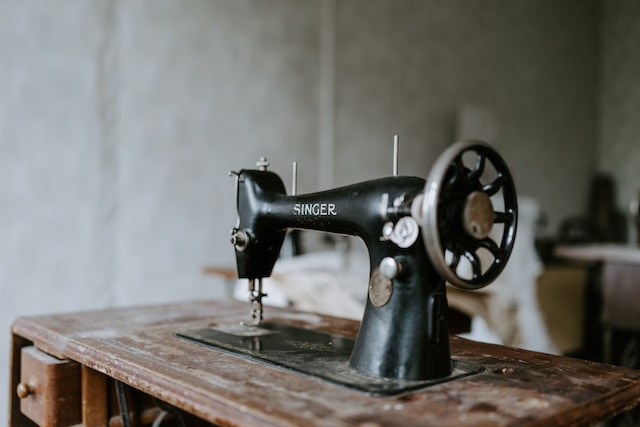
How to Sew Fleece on a Machine?
Sewing fleece on a machine is a great way to create cozy and warm garments, blankets, and accessories. Whether you’re a beginner or an experienced sewist, these tips will help you achieve professional-looking results.
It’s important to choose the right needle for sewing fleece. A ballpoint or stretch needle is recommended as it prevents the fabric from getting damaged or stretched out during stitching.
When setting up your sewing machine, adjust the stitch length to a longer setting. This helps prevent the fabric from bunching up while sewing. Additionally, using a walking foot can make feeding thick layers of fleece through the machine easier.
To start sewing, align the edges of your fabric pieces and pin them together securely. Use clips if pins leave visible holes in your fleece.
When stitching, use a straight stitch or zigzag stitch depending on your preference and project requirements. Experiment with different stitches on scrap fabric before starting on your main piece to ensure desired results.
Remember to backstitch at the beginning and end of each seam for added durability. For extra reinforcement when working with heavy-duty fabrics like fleece, consider using double-stitched seams or adding topstitching along the edges.
With these tips in mind, you’ll be well-equipped to sew beautiful projects with fleece using your trusty sewing machine!
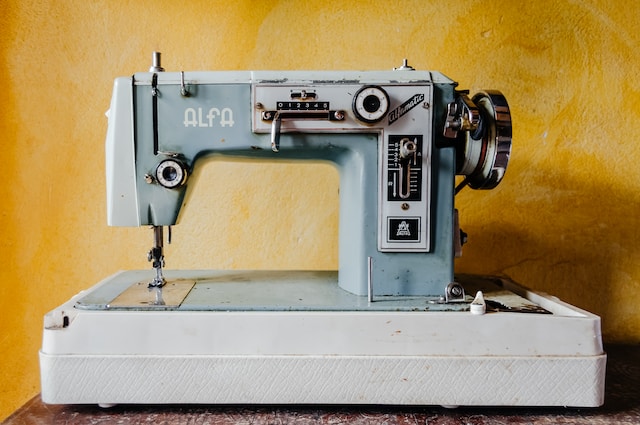
Alternatives to Sewing Fleece on a Machine
If you don’t have access to a sewing machine or simply prefer not to use one, there are alternative methods for sewing fleece by hand. While it may take a bit more time and effort, these techniques can still yield great results.
One option is to use a needle and thread to sew the fleece together. Start by pinning the pieces in place, then use small, even stitches along the edges to secure them together. This method requires patience and precision, but it can be quite effective.
Another alternative is using a blanket stitch or whip stitch. These decorative stitches not only hold the fabric together but also add a nice finishing touch. To do this, simply loop your thread around the edge of the fabric and pull through, creating a series of small loops along the seam.
If you’re feeling adventurous, you could try using fabric glue instead of sewing. Apply a thin layer of glue along the edges of your fleece pieces and press them together firmly until dry. Keep in mind that this method may not be as durable as traditional sewing but can work well for lighter-weight projects.
Whether you choose to sew fleece on a machine or opt for one of these alternatives will depend on your personal preference and available resources. Explore different options and find what works best for you!
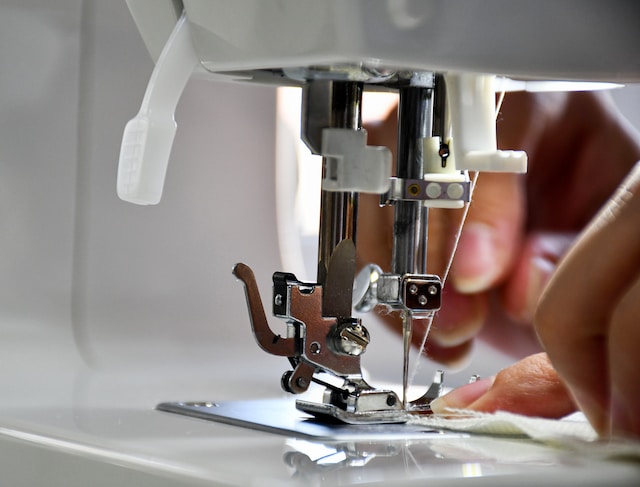
Tips for Sewing Fleece
When it comes to sewing fleece on a machine, there are a few tips that can help make the process smoother and more successful. First and foremost, it’s important to choose the right needle for the job. A ballpoint or stretch needle is ideal for sewing fleece, as it will glide through the fabric without causing any snags or tears.
Another tip is to use a longer stitch length when sewing fleece. This will help prevent puckering and ensure that your seams stay solid and secure. Additionally, using a walking foot attachment can be helpful when working with thick fabrics like fleece, as it helps feed the material evenly through the machine.
Before you start sewing, it’s also a good idea to test your stitches on scrap pieces of fabric first. This will allow you to adjust your tension settings if needed and ensure that everything is running smoothly before you begin working on your actual project.
Don’t forget to trim down any bulky seam allowances once you’ve finished sewing. This will help reduce bulkiness in your finished garment or project and give it a more professional look overall.
By following these simple tips, you’ll be well-equipped to sew fleece on a machine successfully and achieve beautiful results every time!
What is the Best Stitch for Fleece Blankets?
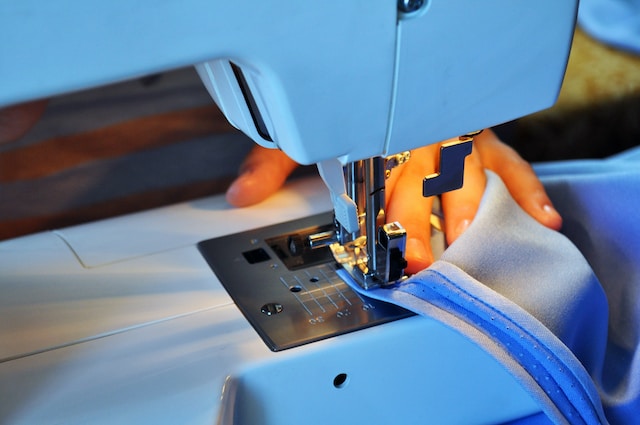
When it comes to sewing a fleece blanket, choosing the right stitch can make all the difference in achieving a clean and professional finish. While there are various stitches you can use, one of the most popular options is the straight stitch.
The straight stitch is simple yet effective for sewing fleece blankets. It provides a strong and secure seam that holds up well over time. To give your fleece blanket added durability, consider using a longer stitch length on your machine.
Another option to consider is using a zigzag stitch. This type of stitch adds extra stretchability to your seams, which can be advantageous if you plan on stretching or pulling your fleece blanket frequently.
If you’re looking for decorative stitching options, try experimenting with different decorative stitches available on your sewing machine. These decorative stitches can add personality and uniqueness to your fleece blanket while still maintaining its functionality.
The best stitch for your fleece blanket will depend on personal preference and intended use. Take some time to test out different stitches on scrap pieces of fabric before committing to one for your final project.
Remember, practice makes perfect when it comes to sewing with fleece! So don’t be afraid to experiment and find what works best for you.
What Tension Should I Use When Sewing Fleece?

When sewing fleece on a machine, one important factor to consider is the tension setting. The tension determines how tightly or loosely the stitches are formed on the fabric. Finding the right tension for sewing fleece can make a significant difference in the overall quality and appearance of your project.
It is recommended to start with a lower tension setting when sewing fleece, as this fabric tends to be thick and fluffy. A lower tension helps prevent puckering or pulling of the fabric, ensuring smooth and even stitches. However, it’s essential not to set the tension too low, as this can result in loose or skipped stitches.
As you sew with fleece, take some time to test different tension settings on scrap pieces of fabric before starting your actual project. Gradually increase or decrease the tension until you achieve satisfactory results – neither too tight nor too loose.
Remember that each sewing machine may have slightly different tensions and preferences when it comes to working with fleece. It’s always a good idea to consult your machine’s manual for specific instructions regarding tension adjustments for different fabrics.
By carefully adjusting and testing your machine’s tension settings, you’ll be able to find that sweet spot where your stitches glide smoothly through the plushness of fleece without distorting its texture or causing any irregularities. Happy stitching!
How to Sew a Fleece Blanket Without Ties?

Sewing a fleece blanket without using ties is not only possible but also gives a more polished and professional look to your finished project. Instead of relying on traditional tie closures, you can opt for an alternative method that will securely hold the layers together.
One popular technique is using a decorative stitch along the edges of the blanket. This adds both style and stability to your creation. You can choose from various decorative stitches available on your sewing machine, such as zigzag, scallop, or wave patterns. Experiment with different options to find the one that suits your design aesthetic.
Another option is using a straight stitch around the perimeter of the blanket, leaving about half an inch of seam allowance. To ensure durability, reinforce this seam by stitching another row parallel to it.
If you want to take it up a notch, consider adding binding to the edges. Binding not only provides a neat finish but also strengthens and protects the raw edges of your fleece fabric.
Remember to use clips or pins instead of ironing when working with fleece since excessive heat can melt or distort its fibers.
By exploring these alternatives, you can create beautiful fleece blankets without relying on traditional tie closures!
How to Sew Fleece Together by Hand?
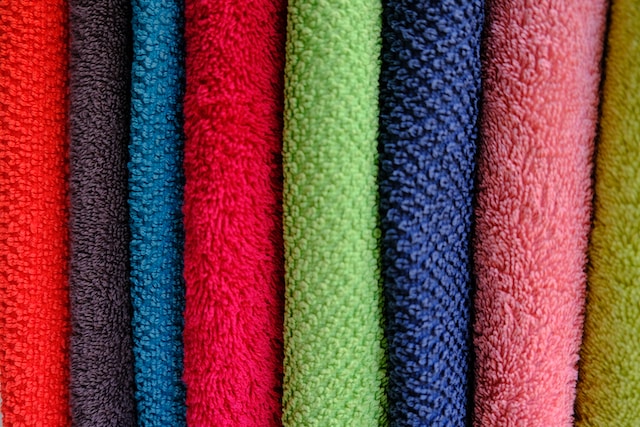
Sewing fleece together by hand is a great option if you don’t have access to a sewing machine or simply prefer the control and precision that hand stitching offers. Here are some tips to help you sew your fleece pieces together seamlessly.
First, gather your materials – a needle suitable for heavy fabrics like fleece, thread in a matching color, and fabric scissors. Begin by placing the two pieces of fleece together with the right sides facing each other.
Next, choose your stitch. A simple running stitch or backstitch works well for sewing fleece by hand. Thread your needle and knot the end of the thread securely.
Start stitching along one edge of the fabric using small even stitches. If you’re using a running stitch, make sure to leave enough excess thread at the beginning and end to tie off later.
As you work along the seam, keep your stitches consistent in length and tension. This will ensure that your seams stay strong and secure over time.
Once you’ve stitched all around your desired area, tie off the thread securely on both ends to prevent unraveling. Trim any excess threads or stray fibers for a clean finish.
Sewing fleece by hand can be time-consuming but also rewarding as it allows for more detailed craftsmanship. Take it slow and enjoy the process!
Best Singer Sewing Machine Settings for Fleece

When it comes to sewing fleece on a machine, using the right settings on your Singer sewing machine can make all the difference. Here are some tips for getting the best results.
First and foremost, make sure you have a ballpoint needle installed in your machine. This type of needle is designed specifically for knit fabrics like fleece and will help prevent skipped stitches or fabric snags.
Next, adjust your stitch length and tension settings. For most fleece projects, a longer stitch length (around 3-4mm) works well to accommodate the thickness of the fabric. As for tension, start with a lower setting and gradually increase it until you achieve balanced stitches that don’t pucker or pull too tight.
When it comes to selecting a stitch type, consider using a stretch or zigzag stitch. These stitches provide flexibility and durability when working with stretchy fabrics like fleece.
Another important setting to consider is the presser foot pressure. Fleece is quite bulky, so increasing the pressure can help ensure even fabric feeding while sewing.
Take your time and sew slowly when working with fleece. The thick nature of this fabric requires extra care to avoid mistakes or uneven stitching.
By adjusting these Singer sewing machine settings accordingly, you’ll be well-equipped to tackle any fleece project with ease!
Conclusion
In this article, we have explored the art of sewing fleece on a machine. Fleece fabric is a versatile and cozy material that can be used for various projects such as blankets, clothing, and accessories. By following the steps outlined above, you will be well-equipped to tackle any fleece sewing project with confidence.
Remember to choose the right needle and thread for your machine, use a ballpoint or stretch needle to prevent skipped stitches, and adjust your tension settings accordingly. Don’t forget to practice on scrap fabric before starting your actual project to ensure smooth stitching.
If you prefer not to sew fleece on a machine or don’t own one, there are alternative methods such as hand-sewing or using adhesive products specifically designed for fabrics like fleece.
Always remember these helpful tips: go slow and steady when sewing fleece, use clips instead of pins whenever possible to avoid damage to the fabric’s structure, and consider finishing edges with techniques like serging or zigzag stitches.
With patience and practice, you’ll soon master the art of sewing fleece on a machine. So gather your materials and get ready to create warm and fuzzy projects that will bring comfort during those chilly winter months!

[…] Fleece: Fusible Fleece is the secret ingredient to giving your clutch structure and durability. It will add the necessary […]